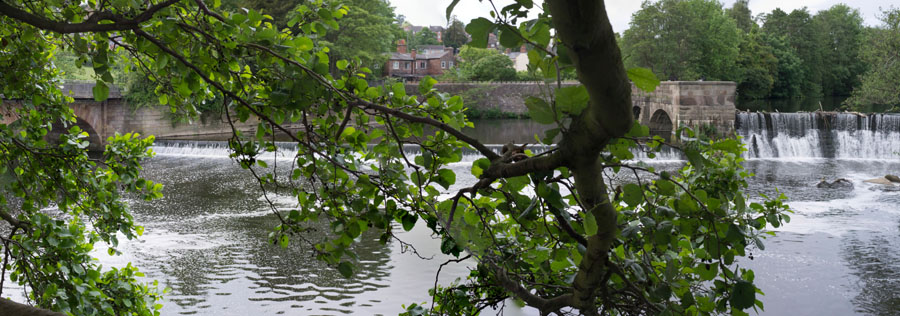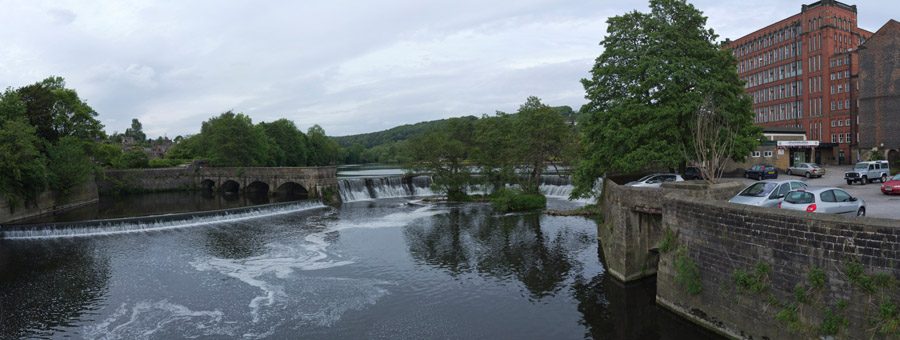One of the features of the Fuji FX100 is the large number of different ‘Drive Modes’ it offers. I suppose it is a good thing, but the way they are implemented definitely isn’t, as it is only too easy to change into the wrong one.
Pressing the main control drive on the rear of the camera even slightly off-centre towards the top brings up the menu which offers as well as the default ‘still image’ the possibilities of ‘movie’, ‘motion panorama’, ‘dynamic range bracket’, ‘film simulation bracket’, ‘ISO bracket’, ‘AE Bracket’ and ‘Top 10’. All of which might have their uses, but if you just want to take pictures, switching away from still image by mistake is all too easy to do and extremely annoying.
So far I’ve taken a few bad movies without intending to, and also tried on perhaps 50 occasions to use the ‘motion panorama’ setting. One of the first did give me a more or less usable panorama (there were slight but hardly noticeable problems), but all my other attempts since have failed miserably, with distinct bands as the exposures failed to match across the image.
I think it may be necessary to select manual exposure to get it to work, although the exposure is supposed to be set by the first frame, but clearly something is happening to stop this feature working as it should. It’s a shame as it would offer a quick and easy way to make a panorama. I’ve actually still found it useful to do a quick test shot before setting up my tripod and D700 to shoot the real thing, giving a good idea of what my final result might be like.
The FX100 offers you a choice of 120 or 180 degree pans, with the camera in either portrait or landscape mode. A 35mm lens is not quite wide enough for many pans in landscape, but is much better in portrait mode, though I usually prefer a 20mm or even wider, and provides a useful horizon guide line with an arrow showing the direction. Both portrait or landscape mode produce 120 degree pans 5120 pixels wide, but in landscape mode they are only 1440 pixels high while portrait mode gives a more useful 2160 pixel height.
Although I’ve not had great success so far with the ‘motion panorama’ setting, I have found it easy to use the camera to take panoramas simply by setting manual exposure and focus and making a series of exposures, and then using software such as PTGui (or the free open source Hugin) to combine them. I find it particularly easy to hold the camera in portrait mode for this, and the ‘artificial horizon’ feature makes keeping the camera upright easy. The nodal point seems to be pretty close to the centre of the body – and rotating the camera around the tripod screw works well for landscape format pans or around the centre of the end of the body for portrait ones.
I took a couple with the camera of the Derwent by the East Mill in Belper the weekend before last. The first, produced from just 3 landscape exposures is a roughly 90 degree horizontal view, and the original file is 7281×2556 pixels. Taken under a tree there was little difficult in lining up the leaves, though I did need to make use of the PTGui masking facility to get a perfect result.

Right Click and select ‘View Image’ for a larger image in Firefox*
The larger pan, a 132.7Mb file, was made with the camera in portrait format, stitched from 6 frames to give a 137 degree view, 22,080 pixels by 4187. If I had a long enough sheet of paper, printing this at 300 dpi would give a six foot long print.

Right Click and select ‘View Image’ for a larger image in Firefox*
The images were shot on RAW and those in each set were processed in Lightroom, adjusting one file and then ‘synching’ the settings to the rest in the set before adding some identical local brushing to the sky area across all of the images. Lightroom also applied a profile to them which reduces chromatic aberration and distortion, presumably making it easier for PTGui to stitch them together. Later in the weekend I took a similar scene with a wider lens (20mm f2.8) using a Nikon D300. The wider angle of view was an advantage, but the FX100 was easier to use and the results seemed just a little better.
* In other browsers, if there is no way to see images at full size you may need to save the images to see them at larger size – they are 900px wide, twice the width they display on this page.